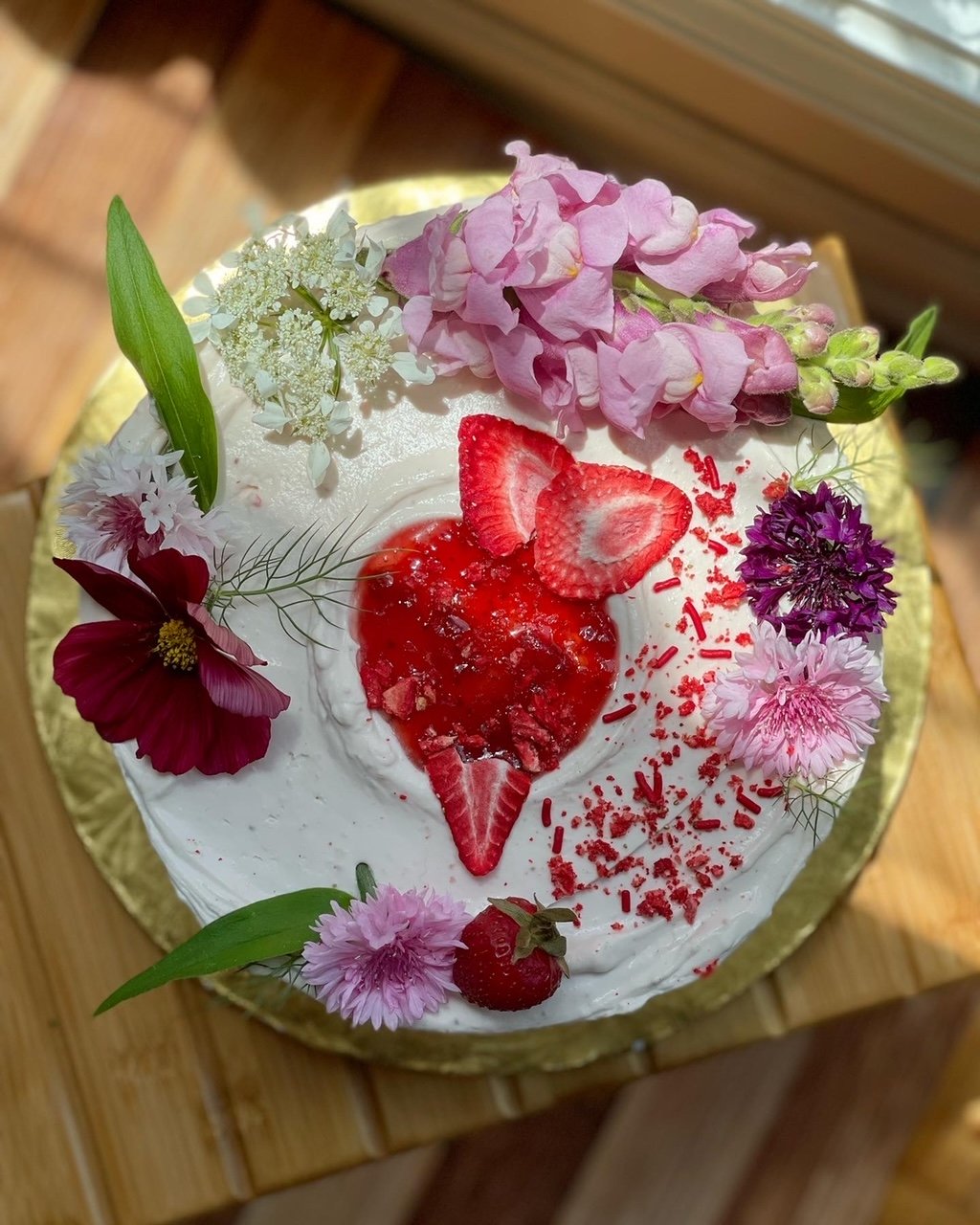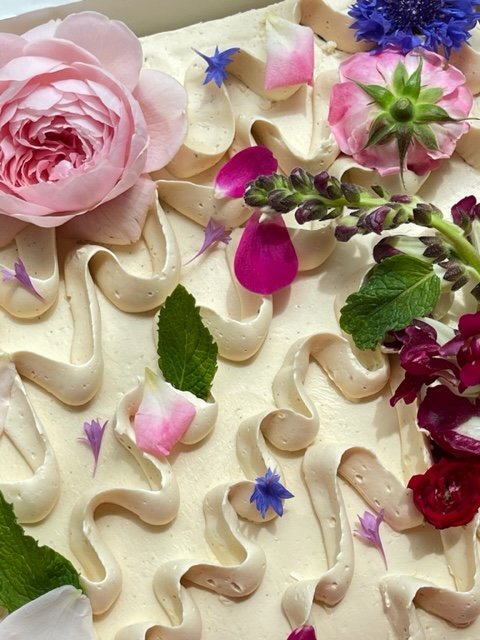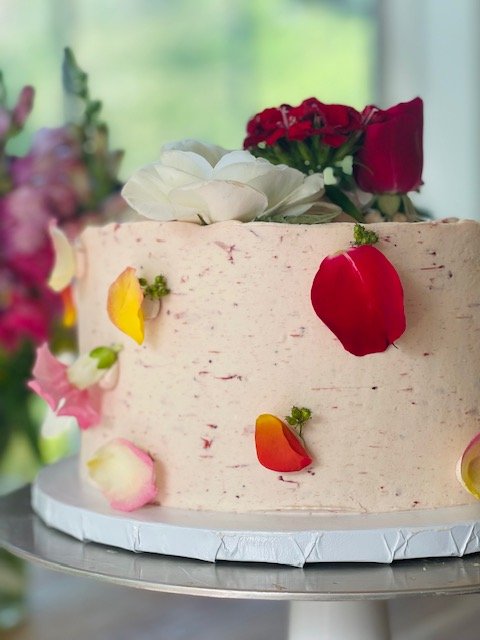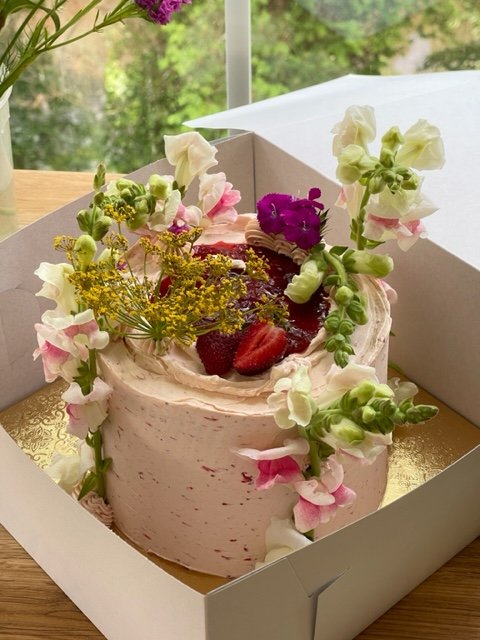When the roses speak
“When the roses speak, I pay attention.” - Mary Oliver
I still remember the first flower I placed on a cake for decoration – a soft pink snapdragon on a tres leches. I had no idea about floral arrangement yet, but the natural curvature of the stem seemed to just ask to be placed in a way that would accentuate both flower and cake. The result was rather haphazard; florals placed with no sense of composition or style other than I thought they looked good where I placed them. Ever since, I’ve let the flowers dictate to me how they’ll go on the cakes. This is my approach to cake decorating, but an important aspect of decorating is to first make sure the flowers are safe for using as deco.
What do I mean by “safe”? I mean the flowers should be non-toxic and pesticide-free. Whenever people ask me if the flowers on the cakes are edible, I tell them there is a difference between EDIBLE and PALATABLE. The flowers are meant for decoration, not consumption. Could you pluck a dahlia off the top of one of my cakes and take a bite? Sure, but it might not be a pleasurable eating experience flavor-wise, not to mention texturally. Flowers often have quite a bitter taste to them, so I advise my customers to remove the florals before slicing and serving. I don’t develop my cake flavors with the flavor of any flower in mind because the flowers are not meant to be eaten.
As the baker, it is my responsibility to source my florals from farmers I know avoid pesticides. It’s also my duty to make sure that the flowers are safe to even just be delicately placed on the cakes. One of my absolute beloved flower is the daffodil. The quintessential spring flower, I know spring has arrived in Atlanta when I spot these guys sprouting up from the dormant winter ground. So it pains me to know that all parts of the daffodil are toxic. Even though I wrap any stem that goes directly into the cake with floral tape, I never chance it. My customer’s safety comes before the aesthetic of the cake, always.
If you’re someone who is interested in using flowers for your cakes, I suggest researching the local flower farms near you. Hit up your farmer’s market and chat with your farmers! This is the best way to know for sure if the florals you’re wanting to use on a cake are safe to do so (remember: pesticide-free; non-toxic). If you forget to ask while at the market and Google is giving you conflicting information, err on the side of caution and don’t use that flower. A non-exhaustive edible, safe for use on a cake list of flowers, just from the top of my head: roses, dahlias, snapdragons, pansies, violas, chamomile, sunflowers, calendula, nasturtium, marigolds.
And don’t forget greenery! I’m personally never finished decorating a cake until I’ve added some green. To me, it is a reminder that the cake deco came from the earth. My personal favorite is the pea plant because every part of it – from the unruly little tendrils to the flowers themselves – are edible and totally safe to use on cakes, given they weren’t sprayed with pesticides.
Here is a list of the flower farmers I’m lucky enough to source from in Atlanta:
Love is Love Cooperative Farm (through my CSA), Mansfield, GA
Hearts of Harvest Farm (through my CSA), Arnoldsville, GA
Floribunda Flower Farm, Rockdale Art Farm, GA
Hillcrest Flower Farm, Marietta, GA
On the very rare occasion, usually in the dead of winter with little other options, I’ll order online from Gourmet Sweet Botanicals. This is always the last resort though, as this option is very expensive and at times the blooms are not as beautiful as I wish they’d be after having flown on an airplane (relatable).




